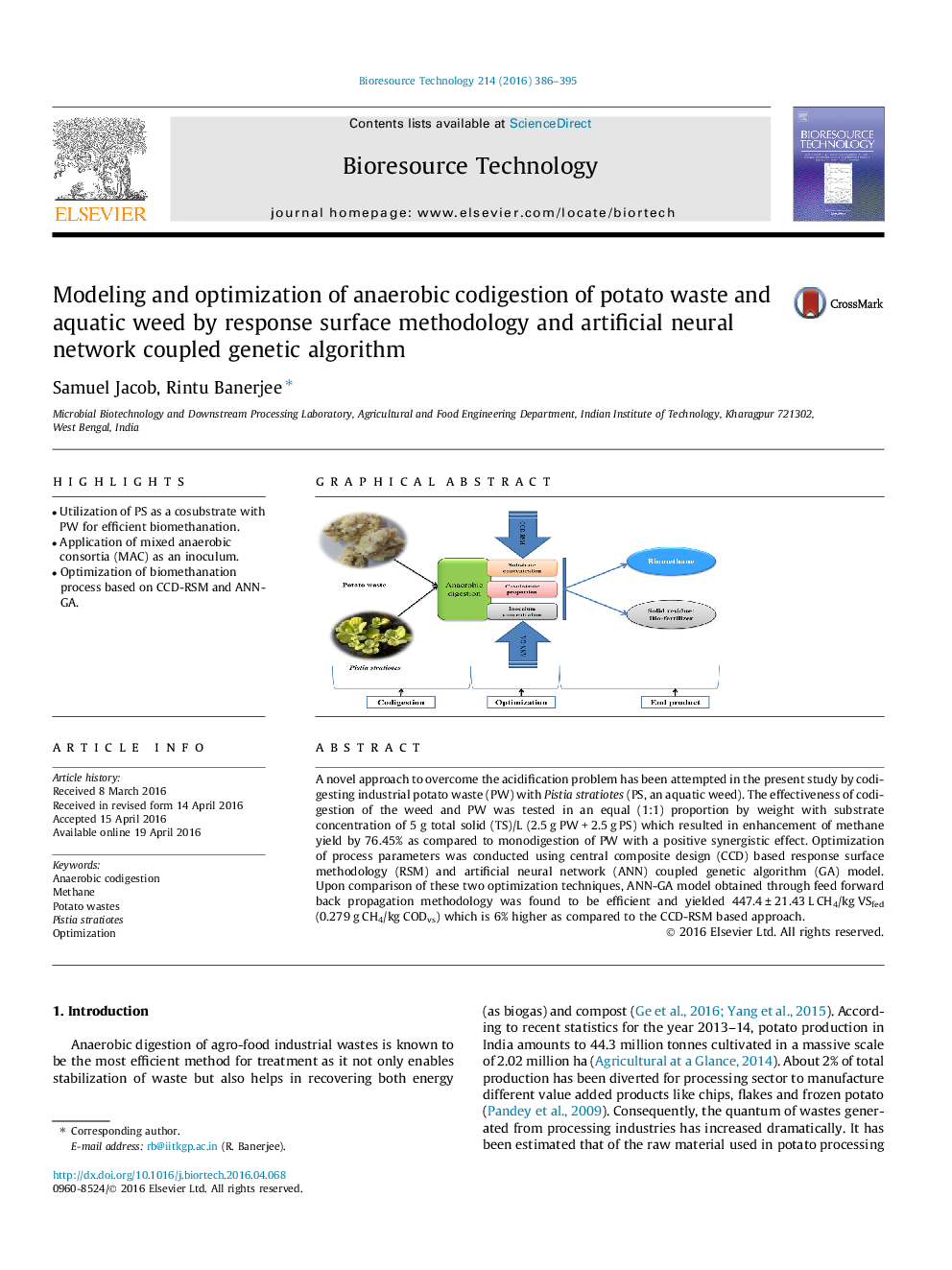| کد مقاله | کد نشریه | سال انتشار | مقاله انگلیسی | نسخه تمام متن |
|---|---|---|---|---|
| 679053 | 1459929 | 2016 | 10 صفحه PDF | دانلود رایگان |
• Utilization of PS as a cosubstrate with PW for efficient biomethanation.
• Application of mixed anaerobic consortia (MAC) as an inoculum.
• Optimization of biomethanation process based on CCD-RSM and ANN-GA.
A novel approach to overcome the acidification problem has been attempted in the present study by codigesting industrial potato waste (PW) with Pistia stratiotes (PS, an aquatic weed). The effectiveness of codigestion of the weed and PW was tested in an equal (1:1) proportion by weight with substrate concentration of 5 g total solid (TS)/L (2.5 g PW + 2.5 g PS) which resulted in enhancement of methane yield by 76.45% as compared to monodigestion of PW with a positive synergistic effect. Optimization of process parameters was conducted using central composite design (CCD) based response surface methodology (RSM) and artificial neural network (ANN) coupled genetic algorithm (GA) model. Upon comparison of these two optimization techniques, ANN-GA model obtained through feed forward back propagation methodology was found to be efficient and yielded 447.4 ± 21.43 L CH4/kg VSfed (0.279 g CH4/kg CODvs) which is 6% higher as compared to the CCD-RSM based approach.
Figure optionsDownload as PowerPoint slide
Journal: Bioresource Technology - Volume 214, August 2016, Pages 386–395
